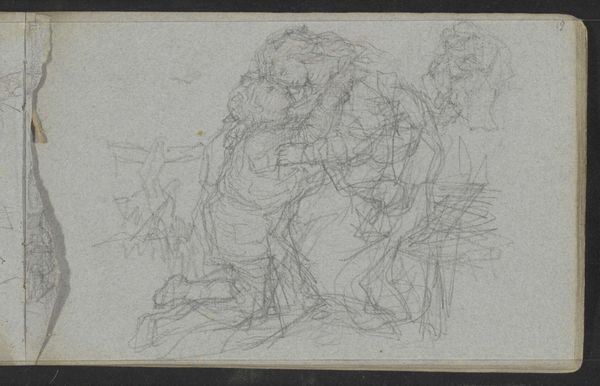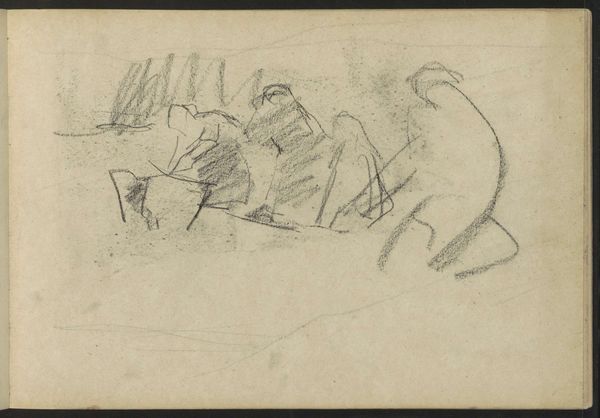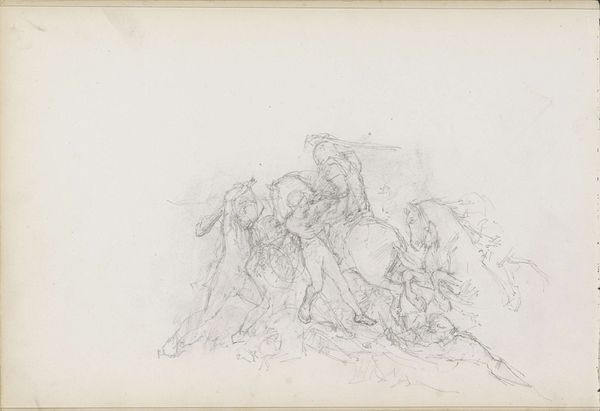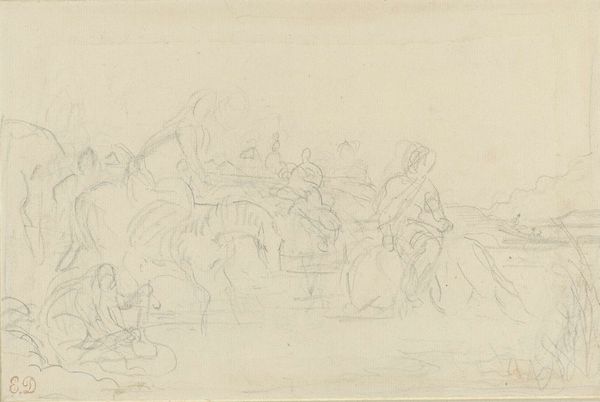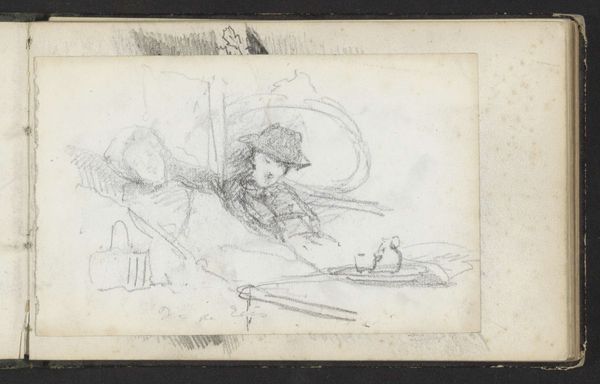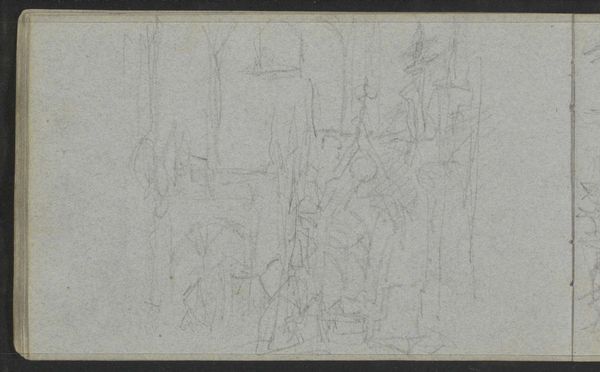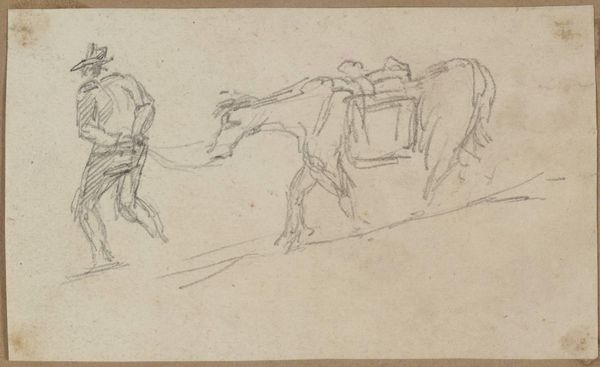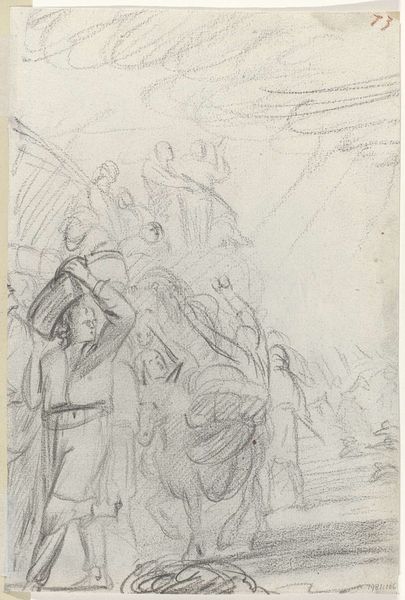
Copyright: Rijks Museum: Open Domain
Curator: Welcome. We're standing before "Landscape with a Woman Kneeling by a Goat," a pencil drawing created by Matthijs Maris sometime between 1849 and 1917. It's part of the Rijksmuseum's collection. Editor: There's an immediate sense of quiet melancholy to it, isn’t there? The soft pencil lines, the muted tones, it’s all rather somber. Curator: It absolutely evokes that. Maris's work, especially his later pieces, often reflects a move towards more subjective, emotional landscapes, contrasting with earlier objective representations of nature. This sketch is fascinating, a small window into his process. Editor: I wonder about the woman depicted. Is she nurturing the goat, perhaps indicating themes of care, rural labor, and the vital connections between women and their livelihood? Or is there an allegorical layer connected to societal perceptions of women and domestic roles in that era? Curator: The period saw the rise of social realism alongside romanticism, presenting contradictory portrayals of labor. Here, the almost ethereal quality blurs that reality, which keeps the goat and woman connected to older symbology. It could also touch upon representations of women as part of the landscape, vulnerable figures. Editor: And what does it suggest about class dynamics? Artisans or rural peasants were often at odds during rapid industrial change. Could the kneeling figure be an assertion of rural autonomy and resistance? Or a sentimental gloss meant to romanticize such toil and disguise inequity? Curator: Those interpretations definitely add layers of complexity, especially knowing the late date of execution, which makes it contemporaneous to burgeoning social movements. Maris’s tendency toward dreamlike imagery offers some respite, though, and an ambivalence that transcends simplistic class readings. His choices shaped by market tastes as well. Editor: Yes, the artistic decisions were inevitably shaped by societal trends, and by prevailing aesthetics of the time, it’s so relevant that its currently housed in the Rijksmuseum today and to understanding it at large. A captivating, deceptively simple sketch! Curator: A fascinating sketch to consider how it relates to societal discourse then, as it speaks to social norms and representations today. Thank you for joining me in considering it.
Comments
No comments
Be the first to comment and join the conversation on the ultimate creative platform.
